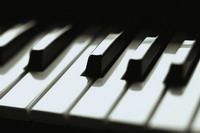Piano Sheets > Frederick Loewe Sheet Music > I Could Have Danced All Night (ver. 1) Piano Sheet
I Could Have Danced All Night (ver. 1) by Frederick Loewe - Piano Sheets and Free Sheet Music

About the Song
"I Could Have Danced All Night" is a song from the musical My Fair Lady, with music written by Frederick Loewe and lyrics by Alan Jay Lerner, published in 1956. The song is sung by the play's heroine, Eliza Doolittle, expressing her exhilaration and excitement after an impromptu dance with her tutor Henry Higgins.
It was first performed by Julie Andrews, in the original Broadway production of My Fair Lady. In the 1964 film adaptation of the musical, the song was sung by Marni Nixon, dubbing the singing voice of Eliza Doolittle (who was played by Audrey Hepburn).
Hit versions of the song were recorded by Sylvia Syms, Dinah Shore, Frank Sinatra, Rosemary Clooney and Jamie Cullum. It was featured in The Birdcage sung by Nathan Lane, Hank Azaria, Gene Hackman, Robin Williams and Dianne Wiest. Many actresses have also sung the song in the stage version of the musical including Martine McCutcheon,.
Download this sheet!
About the Artist

Random article
How to enhance sight-reading for piano sheet music If you want to learn how to play, the piano in a live performance impromptu then you need to improve your sight-reading of sheet music. Chances are you will have to play music notes, which are unfamiliar.
Picking it at random
One of the best ways to enhance your sight-reading of piano notes is to pick any book randomly and start playing. Ideally, you want to start playing these musical notes from the first page and continue until you reach the very end. The trick is to be stern with yourself and not stop playing until you reach the last page of the sheet music.
(More...)
